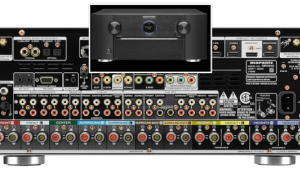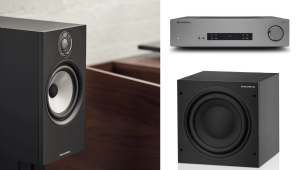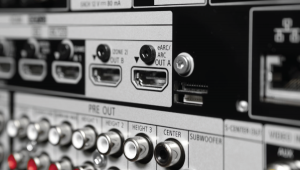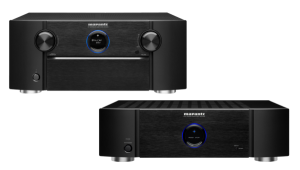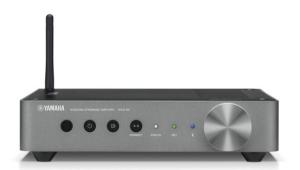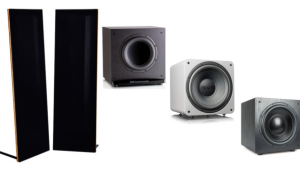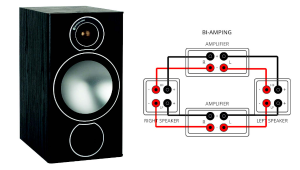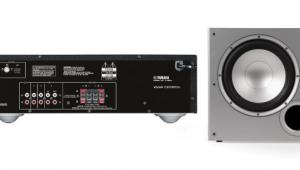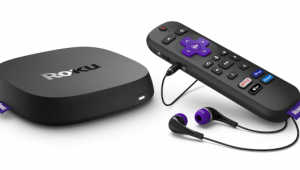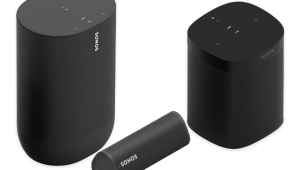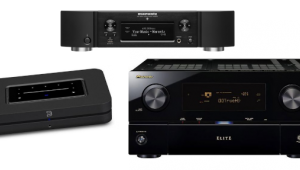Soundbars, 60 vs. 120Hz, DVRs

We have a budget of about $600 for a sound system to go with our new Panasonic TC-P54G25 plasma TV. We are looking for a system without a lot of clutter. Is there something with a subwoofer and just a couple of speakers, or do we need many speakers? Our TV room measures 22x22 feet.
Ken & Connie Shriver
I assume you don't already have an A/V receiver, and you want to take the audio directly from the TV to the sound system via optical digital or L/R analog. In that case, I suggest a soundbar with subwoofer. However, your room is pretty big, so using a soundbar that relies on reflections from the walls to create a surround soundfield isn't the best idea. Polk offers a couple of well-regarded models in your price range that don't rely on the room to create a surround soundfield, and some come with a wireless subwoofer.
Another possibility is a soundbar from Viziofor example, the VSB210WS is only $300, including a wireless subwoofer. Vizio soundbars use SRS TruSurround HD to create a surround soundfield without relying on reflections from the walls.
Home Theater did a soundbar face-off over two years ago, so the products in it are out of date by now, but you could look at the current products from the same companies. Also, look at our more recent soundbar reviews, which are mixed in with compact, discrete multichannel speaker systems here.
Hertz, Don't It?
Can you please explain the difference between 60Hz and 120Hz LCD TVs?
Ernest Califra
One of the drawbacks suffered by all LCD TVs is motion blurmoving objects appear blurry and indistinct because LCD pixels change their state from one brightness level to another relatively slowly. To mitigate this problem, manufacturers have increased the refresh rate of their LCD TVs from 60Hz to 120 or 240Hzthat is, instead of displaying 60 frames per second, they display 120 or 240 frames per secondand developed a processing algorithm called frame interpolation. This algorithm analyzes each pair of frames in the incoming signal, determines where moving objects would be if they had been captured at the higher rate, and synthesizes new frames with the moving objects in those positions.
This process reduces motion blur dramatically, but it also introduces an artifact often called the "soap-opera effect," because it makes film-based content look like it was shot on video like a soap opera. You can turn frame interpolation off if you don't like this effect, in which case each incoming frame is repeated several times to fill 120 or 240 frames per second, and motion blur is not reduced. (Some LCD TVs also flash or scan the backlight, which tends to reduce motion blur, but not as much as frame interpolation.)
Ditching Cable
I want to remove the cable company from my TV viewing, so I am thinking about getting an antenna and some Web TV device like Roku or Google TV. However, I love my DVR, especially for pausing and fast shuttling through recorded programs and live TV. What are the options out there?
Mark Ruffenach
Enjoying DVR functionality with over-the-air TV signals is no problemI like TiVo for that, though our review of the TiVo Premier is not entirely positive. I use a previous-generation TiVo Series 3, which I love. Also, there are many computer-based DVRs that work with over-the-air signals, but I have no experience with them, so I can't make a specific recommendation there.
Recording TV streamed from the Internet is another matter; I know of no commercial device or software that will do it. On the other hand, most streaming content is on-demand, so there's no real need to record it to a DVR-type device. I don't know if you can pause and fast-shuttle through streaming content, but I'd be surprised if you can't.
If you have a home-theater question, please send it to scott.wilkinson@sorc.com.
